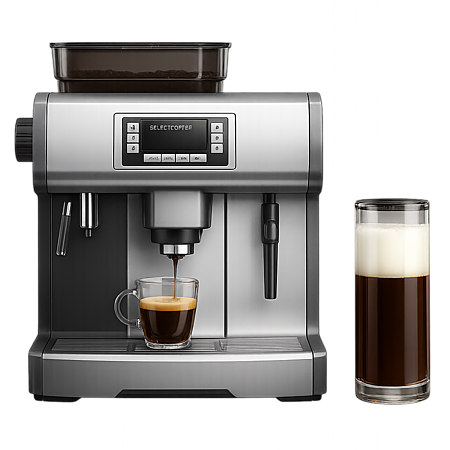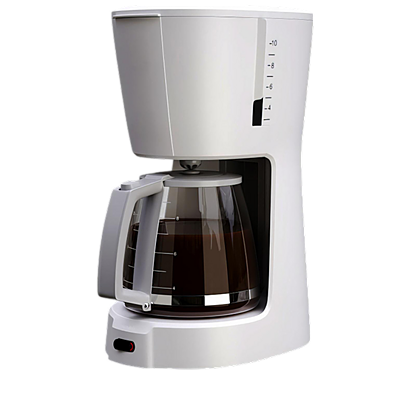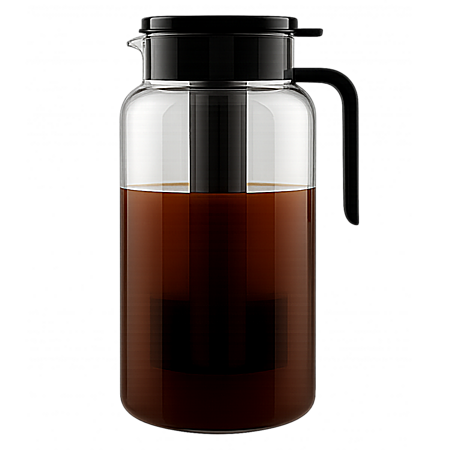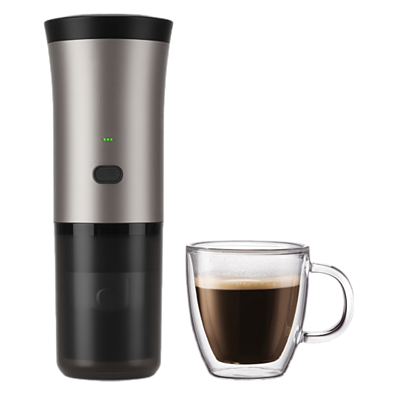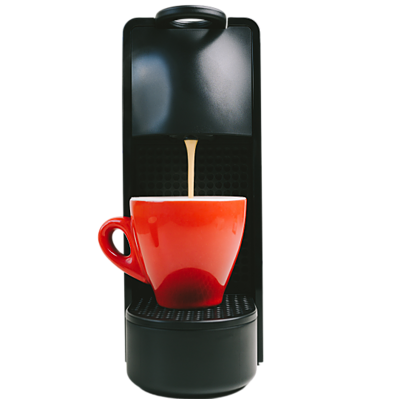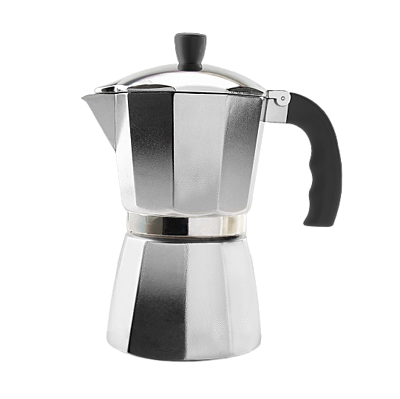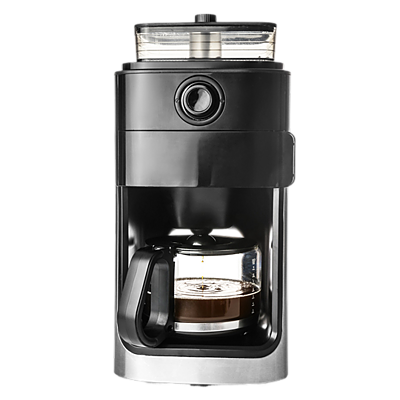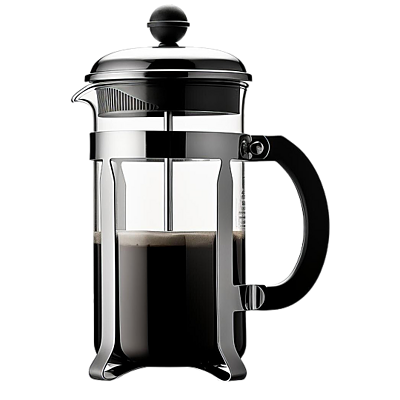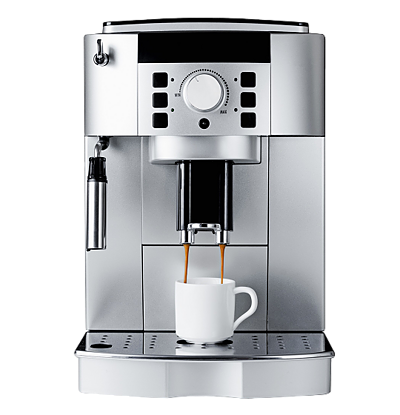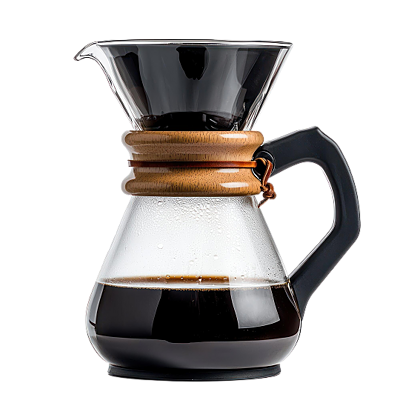French press coffee makers are not only rustic or retro. They’re also dependable, flexible, and capable of producing some of the most full-bodied, flavorful coffee you can make at home. Since there is no paper filter to soak up the oils, and no finicky technology to operate, the French press is a remarkably reliable way to make a rich, aromatic cup of coffee.
In this guide, I’ll explain what to look for in a French press to find the one that’s right for your lifestyle, taste, and brewing preferences. And, if you’re interested in reading more about coffee machines in general and reviewing the different brands on the market, see my main buyer’s guide.
How to Buy a French Press Coffee Maker: Key Features to Consider
Press Size & Brew Capacity
French presses come in a range of sizes, typically from 12 ounces (single serve) up to 51 ounces (around 8 cups). Choosing the right size depends on how much coffee you usually make and how many people you brew for.
If you’re making coffee just for yourself, a 12–17 oz press (1–2 cups) is compact and quick to clean. For two to three people, a medium press around 24–34 oz is a practical middle ground. Larger presses—usually 34–51 oz—are best for households or entertaining, where you’re brewing four or more cups at once.
Keep in mind that manufacturer “cup” measurements are often smaller than standard mugs—typically 4 oz—so check the actual fluid ounces listed. Also, larger presses hold more heat but are bulkier to store and clean. Buy slightly larger than you think you need. You lose a bit of volume to the ground.
If you brew multiple cups throughout the morning, a larger press saves time. For travel or occasional use, a smaller model is more portable and efficient. Match the size of the press to your daily routine to avoid brewing too much or too little.
Filter and Plunger Design
The filter and plunger system in a French press directly affects both the clarity of your coffee and how easy it is to use and clean. A well-designed plunger should move smoothly and fit tightly against the sides of the carafe to create even pressure and minimize grounds slipping through.
Most French presses use a stainless steel mesh filter, often in multiple layers. A single mesh screen allows more oils and fine grounds into the cup, creating a fuller-bodied brew with some sediment. Dual or triple-layer filters reduce grit and result in a cleaner cup while still preserving flavor depth. If you prefer less texture in your coffee, look for presses with multi-layered or fine-mesh filtration.
The filter should be easy to disassemble and rinse thoroughly. Check that the metal parts feel sturdy and that the mesh doesn’t warp or fray over time. Some designs include silicone or metal rings around the filter edge to improve the seal and extraction consistency.
Material and Build Quality
The material of a French press affects its durability, heat retention, and overall user experience. The most common options are glass, stainless steel, and plastic.
Borosilicate glass is resistant to thermal shock and offers a clear view of the brewing process, but it’s more fragile and best suited for home use. Stainless steel presses are highly durable, often double-walled for insulation, and ideal if you want your coffee to stay hot longer. They’re also travel-friendly and less prone to breakage. Plastic models are lightweight and inexpensive, but they may retain odors and scratches over time—best for casual or occasional use.
Build quality matters just as much as the material. Look for sturdy handles, secure lid fit, and a plunger assembly that feels tight and well-aligned. A poorly constructed press can lead to leaking, loose grounds, or even breakage during pressing. If you plan to use your press daily, investing in a model with solid construction and quality parts will pay off in both performance and longevity.
Insulation & Heat Retention
Heat retention is an important factor if you like to sip your coffee slowly or brew multiple cups at once. Standard glass French presses typically lose heat quickly, especially in cooler environments. If you’re using a glass model, preheating the carafe with hot water before brewing can help reduce heat loss.
For better insulation, consider a double-walled stainless steel press. These models maintain brew temperature significantly longer—often 30 minutes to an hour—without needing external warming. They’re ideal for larger batches or situations where you don’t pour immediately after brewing. Some high-end presses use vacuum insulation to preserve heat even longer.
Also check the fit of the lid and plunger, as loose-fitting parts can let heat escape. A well-insulated press doesn’t just keep coffee hot; it also stabilizes temperature during brewing, which improves extraction and flavor.
If you tend to drink your coffee over time or share with others, a well-insulated press is worth the investment. For quick, single servings, a basic glass model may be sufficient with a little preheating.
Spout and Lid Design
A good spout and lid design makes pouring clean and controlled, while also helping retain heat and prevent spills. Look for a press with a well-angled, tapered spout—it should pour smoothly without dripping or splashing. Some presses include a flared or precision spout for better control, especially useful when pouring into narrow mugs or carafes.
Lid design also plays a functional role. A secure, snug-fitting lid helps maintain heat and ensures the plunger stays aligned during brewing. Many lids have a dual-position or twist-to-lock feature, allowing you to close the pour spout when the coffee is steeping or between pours to reduce heat loss. Some models even have a 360-degree lid design that lets you pour from any angle without needing to rotate the lid.
If you plan to serve directly from the press or brew multiple cups at once, choose a model with a spill-resistant spout and a lid that stays firmly in place during pouring. These details make for a cleaner, more enjoyable brewing experience and reduce mess on your counter.
Cleanup & Dishwasher Safety
Easy cleanup can make a big difference in how often you use your French press. Look for models with simple, separable parts—plunger, filter screens, lid, and carafe—that can be rinsed and reassembled quickly. Some presses have multi-layer filters that come apart for deep cleaning, which helps prevent old coffee oils and grounds from building up and affecting flavor.
Dishwasher safety is another key consideration. Many glass and stainless steel French presses are labeled top-rack dishwasher safe, but it’s always best to check the manufacturer’s instructions. Plastic components, such as lids or filter holders, may warp over time if not rated for dishwasher use. For maximum convenience, choose a model with all major components dishwasher safe—especially the plunger assembly, which can be time-consuming to clean by hand.
If you prefer hand-washing, wide carafe openings and smooth interior surfaces make scrubbing easier. Removable mesh filters and plungers that unscrew without tools also speed up the process.
French Press Coffee Maker Types: Choose by Lifestyle and Brewing Needs
Choosing the right French press coffee maker depends on how much convenience and control you want.
Classic Glass Press
Best for: Home brewers who like to watch the brewing process
Pros: Inexpensive, looks great, simple to use
Cons: Breakable, poorer heat retention
If you love brewing coffee and want to be able to see the process in action, this is the press for you.
Stainless Steel Press
Best for: Travelers, campers, or those who need something extra durable
Pros: Won’t break, keeps coffee hot for hours
Cons: Heavy, often more expensive
If you’re using your French press in the field or just want something heavy-duty and industrial, go with a stainless steel press.
Insulated Ceramic Press
Best for: Design enthusiasts and coffee snobs
Pros: Excellent heat retention, beautiful design
Cons: Can chip or break if dropped
This style is for those who want their French press to serve as a functional work of art.
Portable French Press Tumblers
Best for: Commuters and people who want to make one cup at a time
Pros: Single-piece design, can drink directly from it
Cons: Smaller size, more sediment
These are a great option for people who need to brew a cup of coffee in the morning with the fewest possible items.
Advanced Features Worth Considering
- Double or triple-layer mesh filters: Makes for a cleaner, smoother cup with less grit or sediment
- Vacuum-insulated body: Keeps coffee hot for 2–4 hours without altering the taste
- Non-slip base or grip: Helps prevent sliding and slipping for better handling
- Measuring markings inside carafe: Makes for accurate and consistent brewing without the need for a scale
- Built-in coffee canister or storage compartment: Makes for an easy travel kit with storage
- No-drip pouring spout: Eliminates spills when pouring multiple cups
- Locking lid or spill-resistant design: Ideal for mobile use, like in a car or RV
- Dual use models: Some can double as a cold brew coffee maker or tea infuser
Budget Breakdown: What to Expect
French presses are available across a wide price range, and knowing what each tier offers can help you spend wisely.
- Under $20: Budget-friendly models typically feature plastic frames with glass carafes or all-plastic construction. They’re lightweight and functional but may lack durability, insulation, or fine mesh filters. Good for occasional use or travel.
- $20–$50: Most mid-range presses fall here. Expect better build quality, often with borosilicate glass, stainless steel plungers, and dual or triple mesh filters. Some offer insulated walls or larger capacities. This range balances performance, comfort, and longevity for most users.
- $50–$100: Premium models in this range often feature double-wall stainless steel construction, precision fit components, and better heat retention. You’ll also find improved filter assemblies and more refined design details. Ideal for daily use or if you value a cleaner cup and longer-lasting gear.
- $100 and up: High-end options may include design-focused brands or hybrid presses with features like built-in grinders or enhanced filtration systems. These are best for enthusiasts who want premium materials and standout performance.
Spending more usually means better materials, heat retention, and long-term reliability—but even entry-level models can brew excellent coffee with the right technique.
Which French Press Matches Your Routine?
Almost everyone falls into one of these categories. Which one are you?
- In a hurry? Travel tumbler presses are perfect for your grab-n-go morning routine.
- Weekend warrior? Pair a glass press with an electronic scale and enjoy precision pours every time.
- Serving more than one? Grab a 34 oz press or bigger for more than a double serving.
- Going camping? Stainless presses are rugged, hold heat well, and travel easily.
- Flavor fanatic? Choose a press with multi-layer filters and ceramic insulation for better clarity and temperature retention.
- Short on space? Consider a small 12–17 oz press to stash in a tiny kitchen or add to your carry-on.
Match your French press to your morning style. Glass for slow and steady mornings, stainless for go go go, and ceramic for a balance of style and function.
Is a French Press Coffee Maker Right for You?
The French press is a perfect choice for coffee drinkers who like a full bodied cup and don’t mind a little bit of hands-on work. This type of coffee maker will also appeal to you if you prioritize simplicity, portability, and getting a thicker, oilier cup.
On the other hand, if you’re the type of coffee drinker who wants ultra-clean brews with minimal sediment, you may want to look at other brewing methods. For a lot of us, though, the ritual and the result of the French press is hard to resist.


